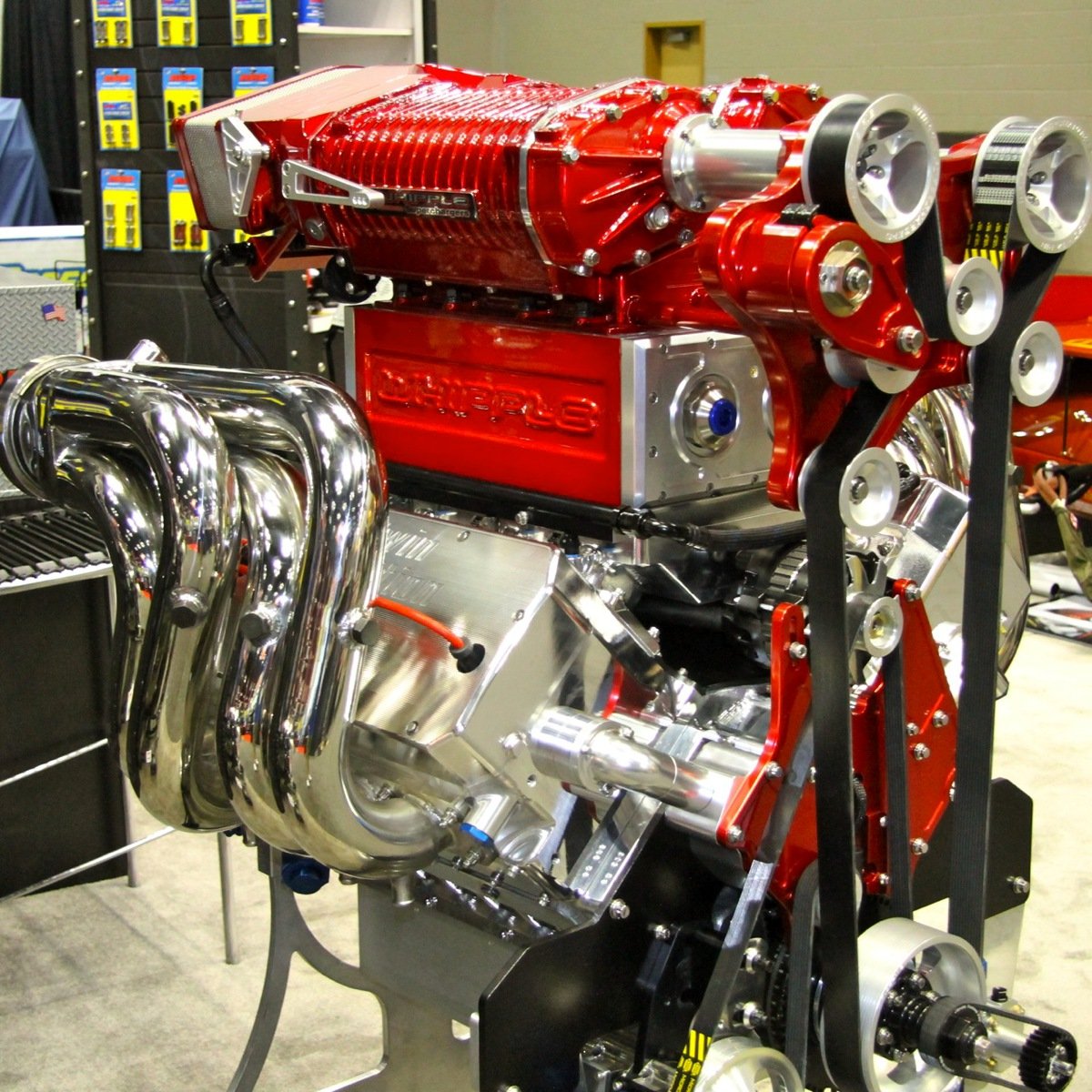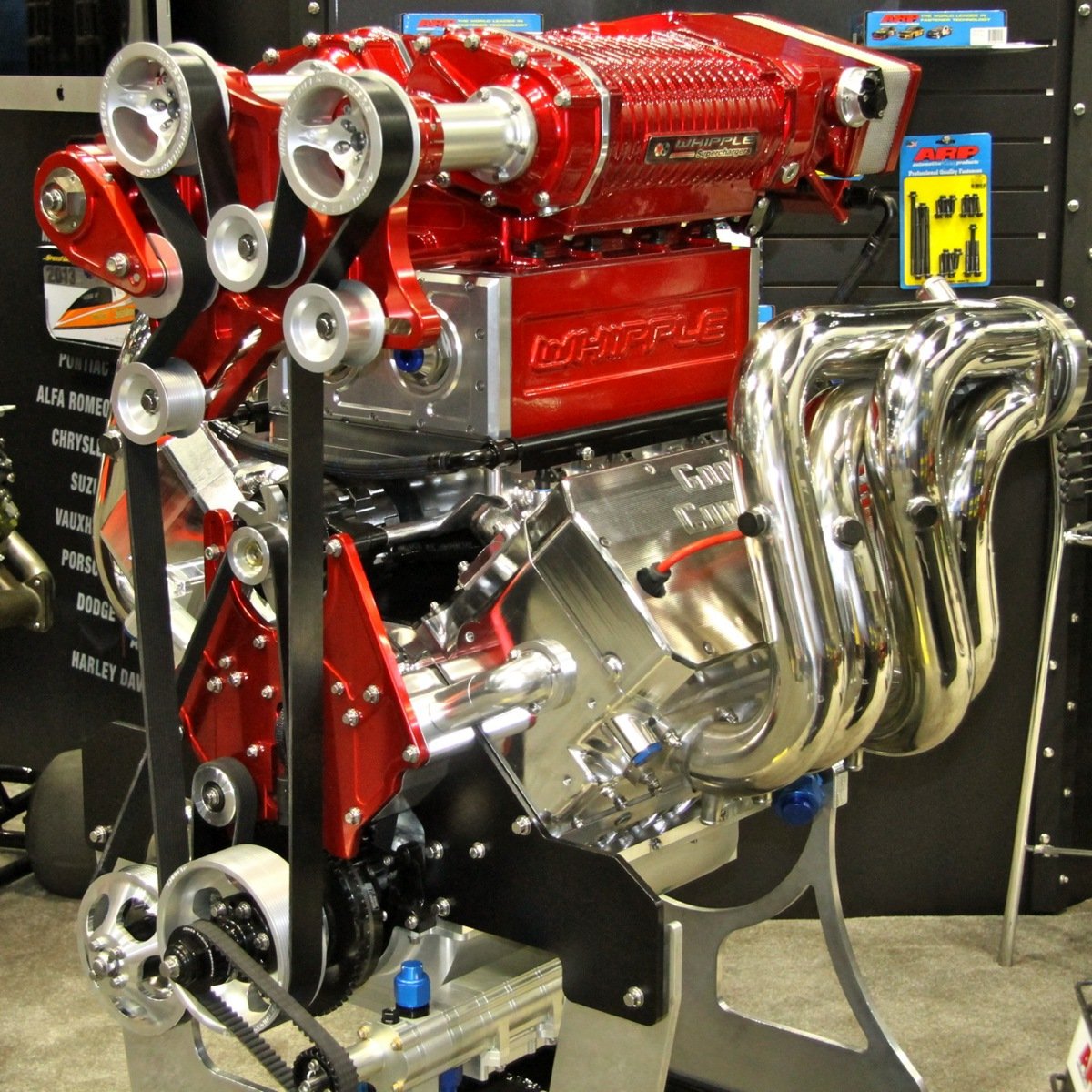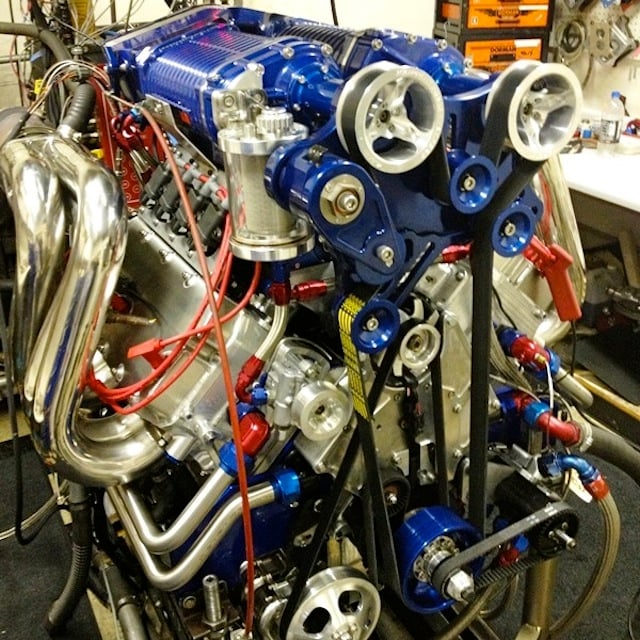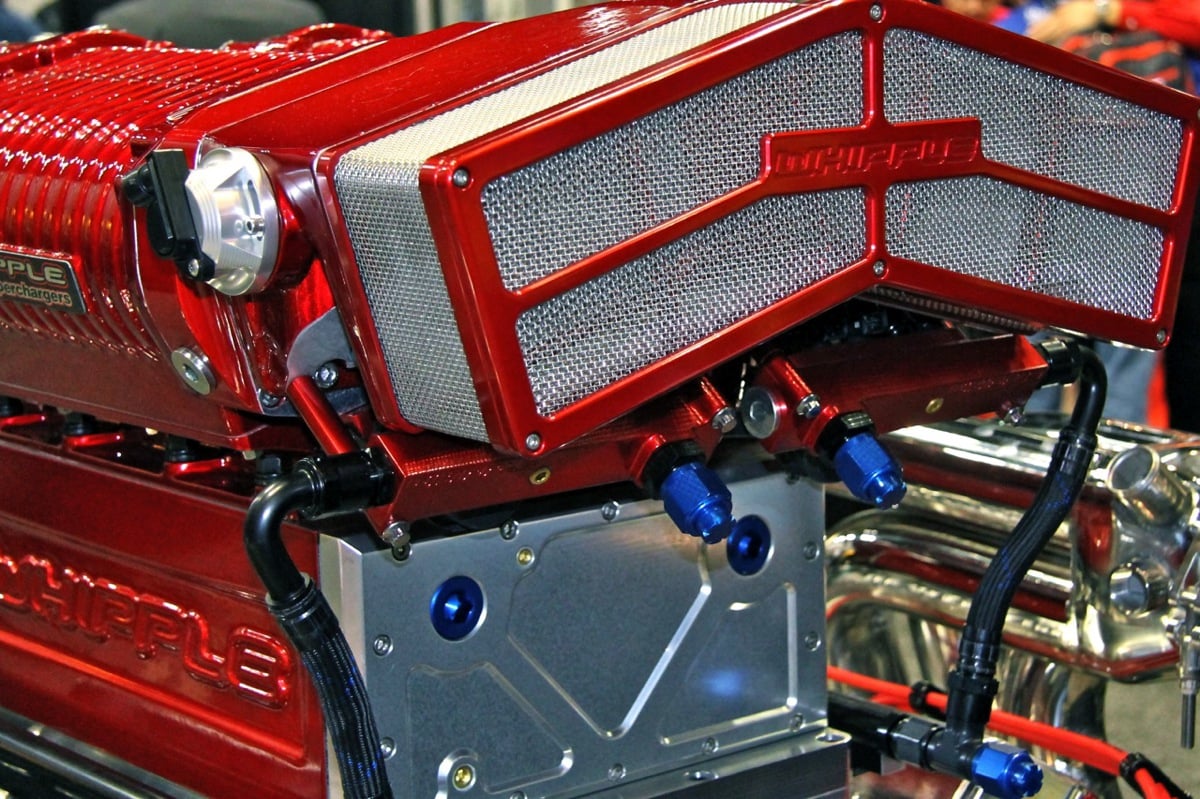 [1]Adapting an all-billet engine originally designed for dirt-slinging truck pullers to the high-dollar yet wet environment of powerboats provided a unique set of challenges to Goodwin Competition [2] — mainly directing priorities away from massive power numbers toward more pump-gas-friendly manners and consistent reliability.
[1]Adapting an all-billet engine originally designed for dirt-slinging truck pullers to the high-dollar yet wet environment of powerboats provided a unique set of challenges to Goodwin Competition [2] — mainly directing priorities away from massive power numbers toward more pump-gas-friendly manners and consistent reliability.
“It’s not meant to be a high-winding, high-strung engine,” says Evan Uerkwitz, an engine builder at Goodwin. “It originally was a clean-sheet design set up for large tractor pulling. We saw a niche in the market to change the product and use it for offshore boats.”
Two views of the Goodwin marine engine reportedly built for a new Pure Platinum 388 Skater boat.
Two, sometimes three, high-powered engines are needed to help 40-foot-plus cats and V-bottom powerboats skim across the water at speeds well over 160 mph — sometimes approaching 190 mph in full race trim. That usually means forced induction, and the marine market has enjoyed success with both superchargers and turbochargers. One of the industry stalwarts is the twin-turbo, 9.0-liter (552ci) V8 from Mercury Racing [6], also a clean-sheet, all-alloy design that ironically is also being marketed as a crate engine for cars [7]. It’s rated at over 1,300 horsepower on pump gas and up around 1,700 horsepower with race fuel.
The Goodwin engine comes in at 650ci with 4.75-inch x 4.675-inch bore-stroke dimensions. The block, heads and intake manifold are CNC machined from single pieces of 6061 T6 aluminum billet.
“It’s a 5-inch bore-space block that’s fully water jacketed,” says Uerkwitz. “There’s a fully enclosed 70mm cam core with nine roller cam bearings.
More info on the block design can be found in this earlier EngineLabs story [8], but significant work on the engine’s cooling system has since been phased into the engine’s development to ensure durability. Running with lake or ocean water as coolant, the engine’s temp is a pleasant 110 to 120 degrees.
“Right now we’re in the triple-digit hours between service visits with right under 2,000 horsepower and basically the drivability of a brand new car, but in a boat,” adds Uerkwitz.
That cool water also is fed through the massive 6-inch thick intercooler between the twin 4.0-liter Whipple [10] superchargers and the billet intake.
“Previously we ran a 4-inch intercooler,” says Uerkwitz. “Whipple stepped up to the 6-inch with immense power gains to be had there.”
The engine is certainly capable of 2,000 horsepower in a racing application, but these engines are generally built for million-dollar pleasure boats. Boost is kept under 20 pounds for durability, and cam selection may also somewhat conservative.
“They’ll go 1,700 horsepower all day long,” says Uerkwitz. “It’ll idle at 800 rpm. Peak torque is in the 5,500 to 6,000 rpm range the way the boats are propped. Peak power is mid to high 7,000 rpm, depending on the cam.”
Internal parts include a Bryant [11] crankshaft, Callies [12] connecting rods and Diamond [13] pistons wrapped with Total Seal [14] rings. This engine was on display in the ARP [15] booth at PRI, so obviously all the fasters are from ARP. Massive 1.062-inch Jesel [16] keyway lifters are positioned exactly where designer Todd Goodwin wants them.
“We have an in-house Spintron [17] to design the valvetrain,” adds Uerkwitz.
The engine features 16 injectors: eight on the intake manifold runners and four on each of the throttle bodies.
Lubrication is handled with a Dailey Engineering [21] 6-stage pump that’s integrated into a billet oil pan. The headers are built by Custom Marine [22]. Feeding fuel to the engine are 16 injectors, eight in the intake runners and four mounted in each of the two oval throttle bodies to help keep the charge temperatures down. A coil-per-cylinder ignition system provides the spark.
“The ECU is from the marine market,” explains Uerkwitz. “There are upsides with a marine ECU, primarily integrated with the rest of the boat. There are cons, as well, in that we can’t do everything an aftermarket ECU can do.”
A pair of turnkey engines, complete with fuel system, electronics and exhaust, will start around $320,000. Two of the early Goodwin marine engines were installed in a 44-foot V-bottom from Outerlimits Powerboats [23]. This particular engine is reportedly going into a new Pure Platinum 388 Skater [24] catamaran.






